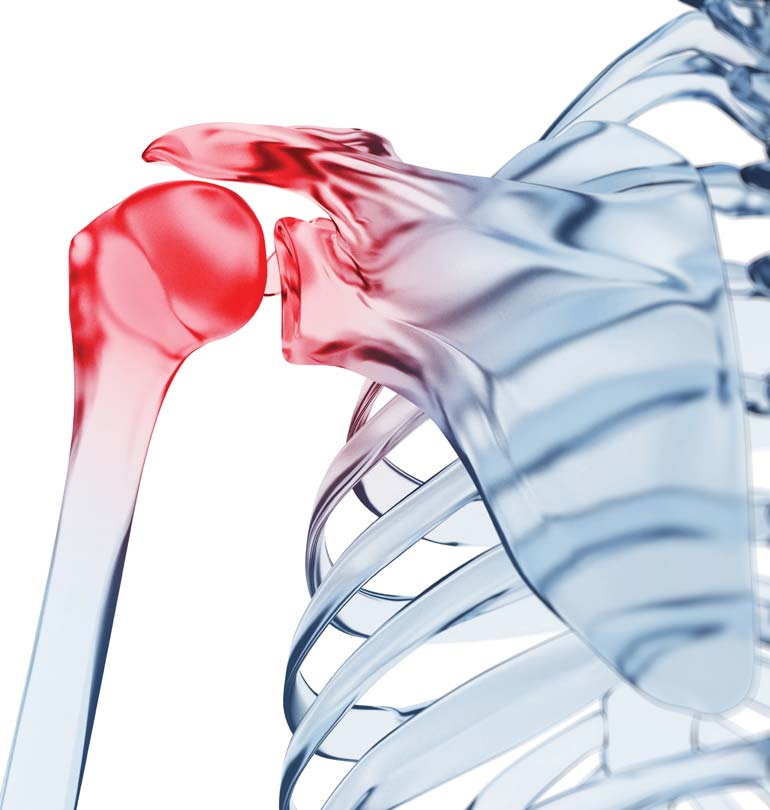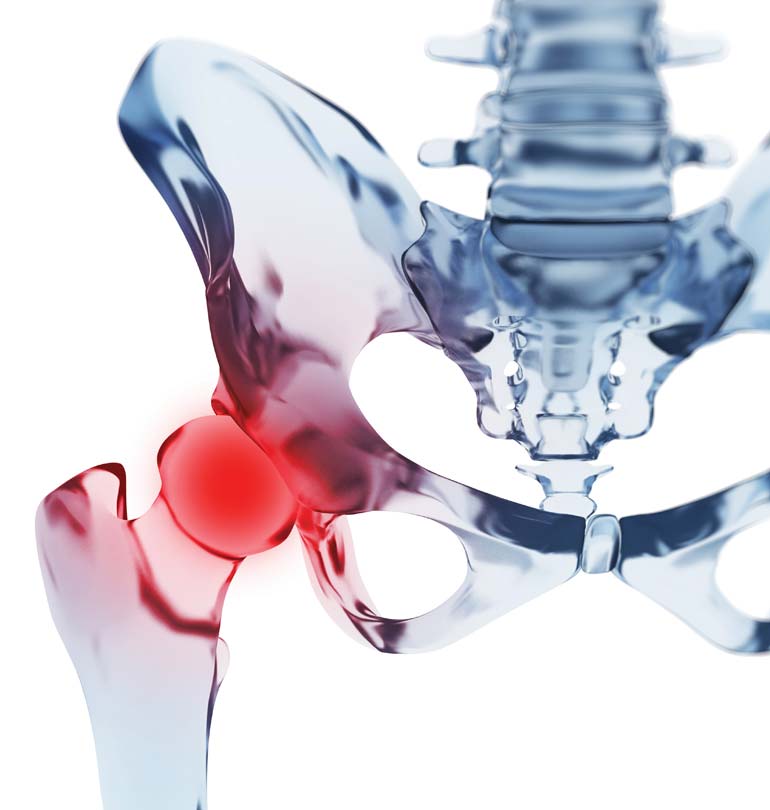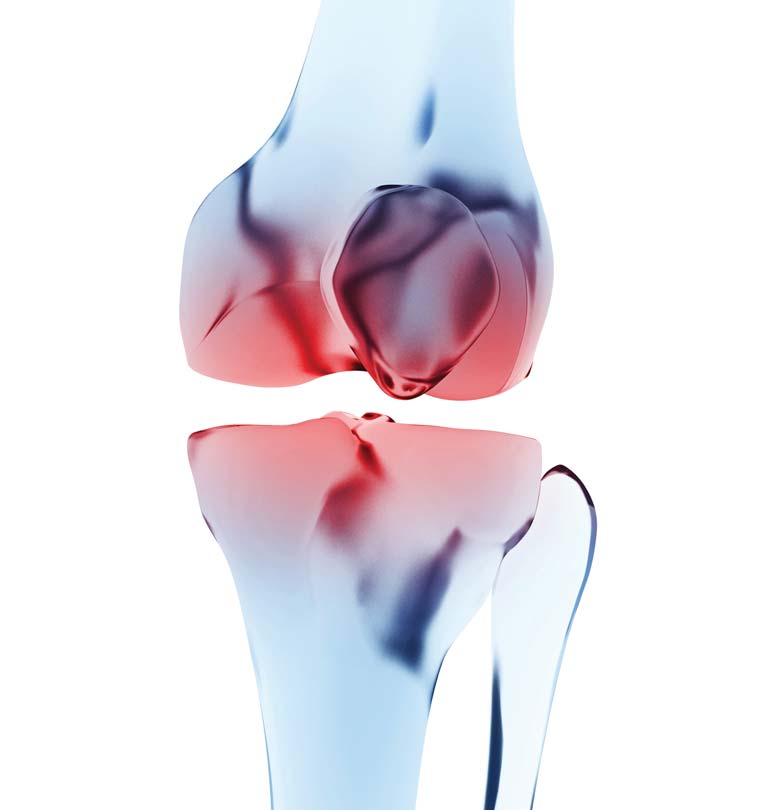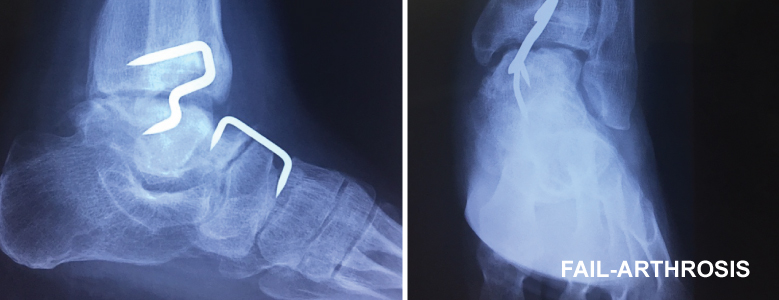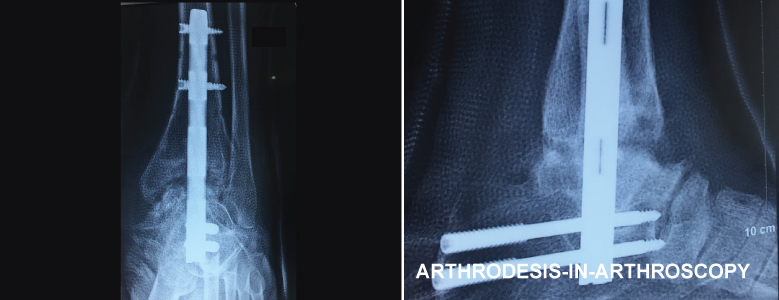
PATHOLOGIES
Ankle osteoarthritis
Osteoarthritis can be described as a degenerative lesion characterized by cartilage wear, local or general reduction and / or disappearance of the cartilage in a joint. Several mechanical causes may be at the origin: the recurrent sprains, instability, old fractures, osteochondral lesions, ... The radiography specifies a narrowed joint space, a condensation of the underlying bone, an exostosis production, cyst formation, etc..
In the case of arthritis, the cartilage disappears homogeneously, often due to autoimmune diseases such as rheumatoid arthritis, psoriasis, inflammation sequela… The joint capsules are often distended under the inflammatory disease , which sometimes increases joint instability and thus increase the risk of recurrence after joint surgery. It is then necessary to choose this risk or perform an arthrodesis. Radiographs show that the joint space has been reached homogeneously and without exostosis production, ...
TREATMENT
Before surgical treatment, cortisone infiltration and anesthetic will be given for the pupose of
- diagnostic: except for cases of advanced osteoarthritis, transient improvement confirms that osteoarthritis is causing
- therapeutic pain : if the pain disappears, infiltration functions as a treatment.
Depending on the age, weight, daily activities, joint history ,professional activities ... we can surgically suggest different types of treatments as far as osteoarthritis and arthritis are concerned,:
- Orthopedic shoes: These shoes ,custom made and depend on pathology are an interesting alternative if an operation is not possible or if you do not feel quite ready to surgery. Do not worry about aesthetics, the market currently offers a variety of (semi-) Orthopaedic very "fashionable"shoes.
- Arthroscopy: In some cases, we find that the pain is mainly concentrated where there is an exostosis, not inside the joint itself. These exostoses or "osteophytes" are actually a protective mechanism of the joint which help spreading the pressure over a larger area, thus reduces the pressure by enlarging the contact surface and therefore reduce pain. Generally, this exostosis is found on both sides of the joint. When moving the joint, the soft tissues are compressed between each osteophyte and inflamed. In medical consultation, the pain of conflict is sought and replicated. If the pain is recognizable and if an anesthesia or local injection of cortisone reduces pain for more than 50%, it is likely that your complaints are largely the result of this conflict between the osteophytes. In this case, you are candidate to benefit from arthroscopy by which we clean the conflicting part to in the joint in order to remove the inflammation. We can affirm that despite all the best precautions, the success percentage in this type of operation is 50%. The worst that can happen is that the deepest pain in the joint center, in preexisting osteoarthritis area, gets at the forefront. In this case, the evaluation should be repeated and we opt for a prosthesis or arthrodesis.
- Supra-malleolar osteotomy and/or calcaneal (of the heel). When the joint is not parallel with the pressing zone and shows an anomaly of constraints and an asymmetrical wear, we can suggest a supra-malleolar osteotomy and / or calcaneal one . The goal is to rebalance the strengths and constraints around this joint and to make them pass on a healthiest part of the joint. In very specific cases, this method can heal or retreat when suggesting an arthrodesis or prosthesis.
- Arthrodesis: in cases of more advanced osteoarthritis or arthritis, this method reveals itself as the reference treatment. The joint will be fixed in a neutral position by open surgery or arthroscopy. The advantages are the historical reliability of these operations leading to good results for several years and a single procedure . However, disadvantages are the need for a discharge and a plaster cast for at least two months postoperative. But the main drawback is that after some years (20-30 years, usually less) degenerative anomalies appear to neighboring joints because they must compensate for the motion of the set joint. We also observed a small limp because the walking cycle is no longer normal.
- Prosthesis: the diseased joint is replaced by an artificial one. Mainly indicated if the neighboring joints show signs of osteoarthritis,whether symptomatic or not,and in case you want to keep the motion of the joint, we can suggest a prosthesis.
Advantages lie in the preservation of the articular motion that reproduces the walking cycle and therefore protects neighboring joints from excessive constraints found in the arthrodesis. It resumes the ankle support from the third week, provided that a removable boot protection is used. But the main disadvantage is that the lifespan of the ankle prosthesis remains shorter than that of the knee or hip. It may therefore be a secondary review by re-prosthesis or arthrodesis.
- Massive allograft or arthroplasty-distraction: We are talking about more experimental interventions which results are less reliable. In case allograft 'fresh frozen' we put a joint donor instead of an artificial joint, which is suitable for your size. We often, note an early cartilaginous suffering that causes collapse of the bone architecture. In case of distraction-arthroplasty, an external fixator is placed around the ankle for few months so that the anchor is distracted . In this way, we attempt to stimulate the formation of new cartilage between the joint surfaces.

